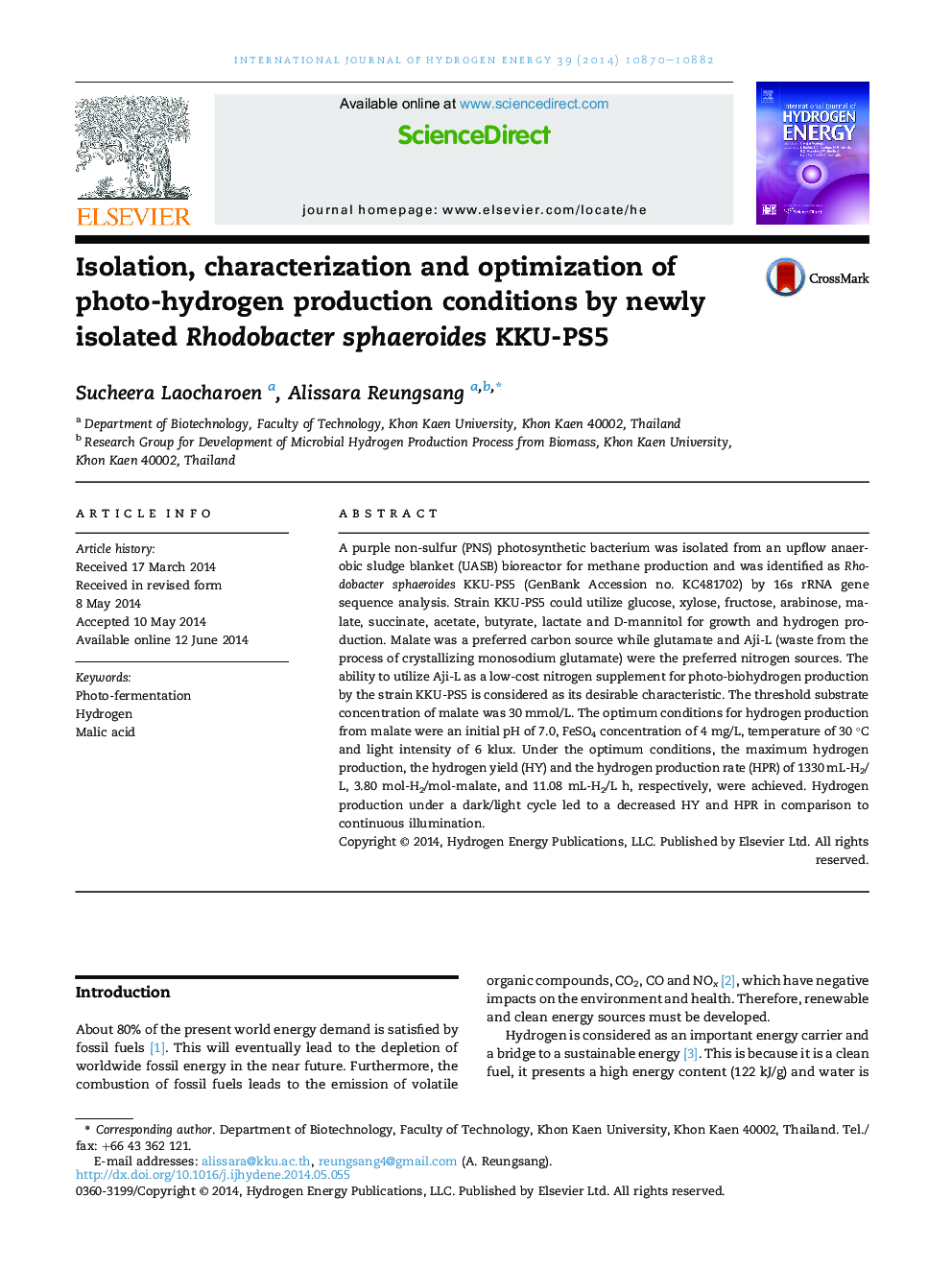| Article ID | Journal | Published Year | Pages | File Type |
|---|---|---|---|---|
| 1272229 | International Journal of Hydrogen Energy | 2014 | 13 Pages |
•Photo non-sulfur bacteria was isolated from UASB reactor used to produce methane.•It was identified as Rhodobacter sphaeroides KKU-PS5.•Malic acid was a preferred C-source, glutamate and Aji-L were preferred N-sources.•pH 7.0, FeSO4 4 mg/L, T 30 °C, light intensity 6 klux were optimum conditions.•Ps, HY of 1330 mL-H2/L, 3.80 mol-H2/mol-malate, respectively, were achieved.
A purple non-sulfur (PNS) photosynthetic bacterium was isolated from an upflow anaerobic sludge blanket (UASB) bioreactor for methane production and was identified as Rhodobacter sphaeroides KKU-PS5 (GenBank Accession no. KC481702) by 16s rRNA gene sequence analysis. Strain KKU-PS5 could utilize glucose, xylose, fructose, arabinose, malate, succinate, acetate, butyrate, lactate and D-mannitol for growth and hydrogen production. Malate was a preferred carbon source while glutamate and Aji-L (waste from the process of crystallizing monosodium glutamate) were the preferred nitrogen sources. The ability to utilize Aji-L as a low-cost nitrogen supplement for photo-biohydrogen production by the strain KKU-PS5 is considered as its desirable characteristic. The threshold substrate concentration of malate was 30 mmol/L. The optimum conditions for hydrogen production from malate were an initial pH of 7.0, FeSO4 concentration of 4 mg/L, temperature of 30 °C and light intensity of 6 klux. Under the optimum conditions, the maximum hydrogen production, the hydrogen yield (HY) and the hydrogen production rate (HPR) of 1330 mL-H2/L, 3.80 mol-H2/mol-malate, and 11.08 mL-H2/L h, respectively, were achieved. Hydrogen production under a dark/light cycle led to a decreased HY and HPR in comparison to continuous illumination.
Graphical abstractFigure optionsDownload full-size imageDownload as PowerPoint slide
